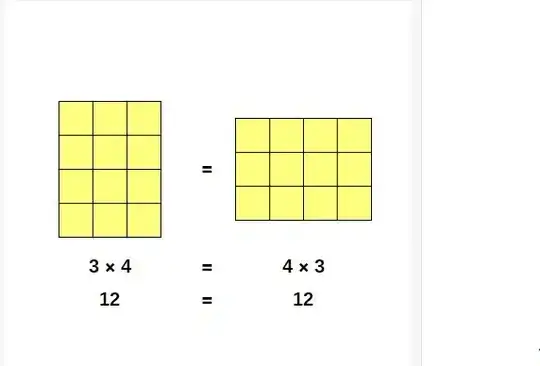The commutative law of multiplication states that:
If '$a$' and '$b$' are any whole numbers, then '$a · b = b · a$'.
I've been looking for why multiplication has this property and how is saying that 3 times 4 the same thing as saying 4 times 3. I've found two interpretations:
- $3 \cdot 4 = 12$ and $4 \cdot 3 = 12$ so, $3 \cdot 4 = 4 \cdot 3$,
- Think of $3\times 4$ as the area of a rectangle with width $4$ and height $3$. If you rotate the rectangle by $90^\circ$, the area is unchanged, but now the width is $3$, and the height is $4$. So, $3\times4 =$ area of rectangle = area of rotated rectangle $= 4\times3$.

These explanations don't seem to show why multiplication has this property but are showing us a way to make it intuitive and, thus, accept it as common sense.
Is there a better way to show that multiplication is fundamentally commutative?